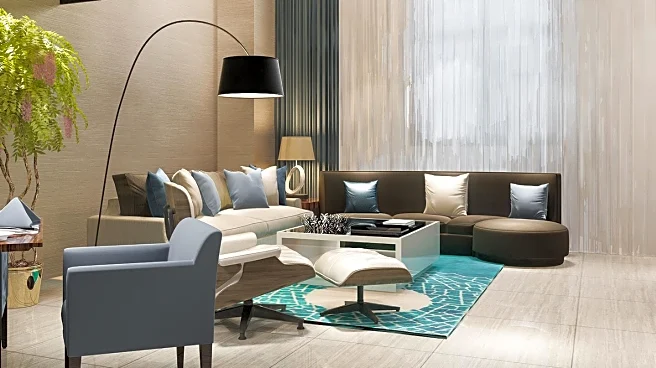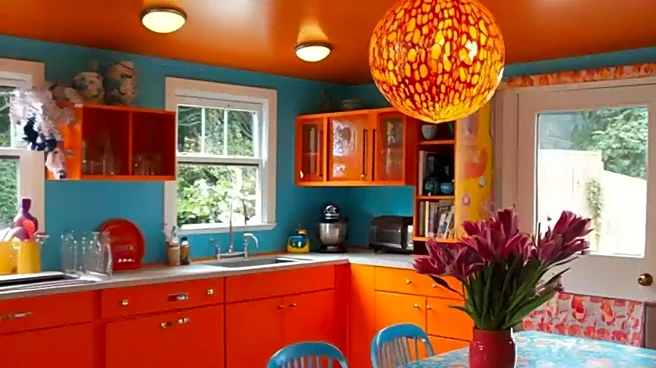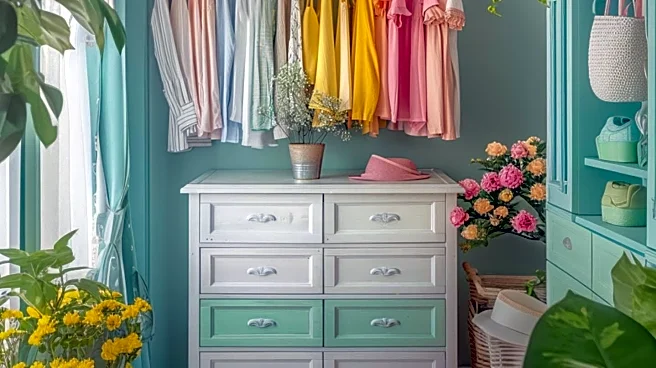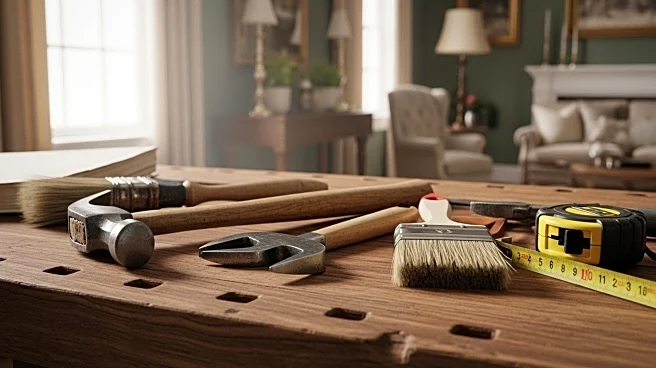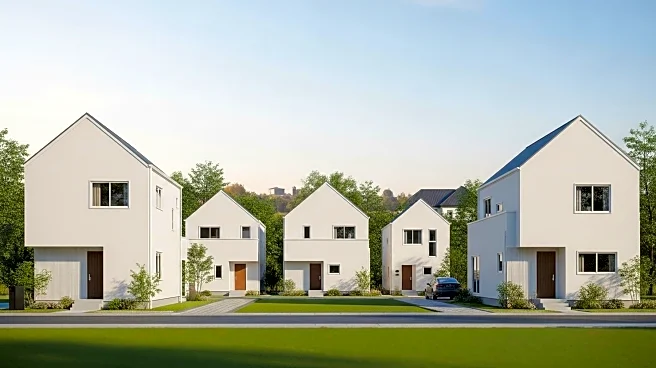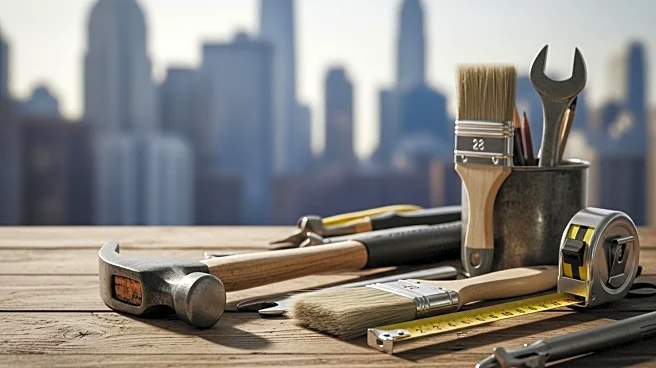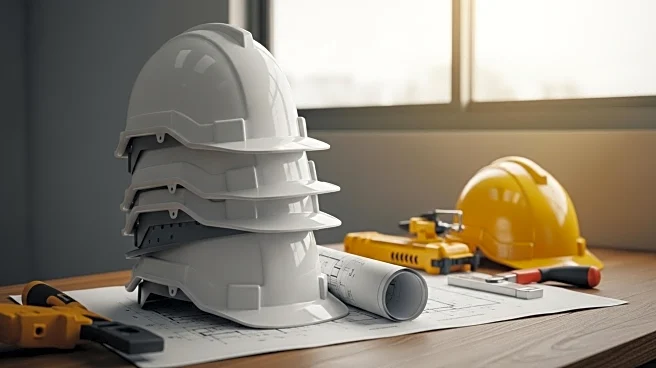What's Happening?
New homeowners were surprised to find original patterned tile flooring hidden beneath the carpet of their recently purchased Victorian-era property. The discovery was documented in a viral TikTok video by user @lucy.ann.x, which has garnered over 15.2 million views. The video shows a man lifting the carpet to reveal intricate, colorful tiles, prompting excitement from those present. This event highlights a growing trend among homeowners investing in renovations to uncover or restore historical features. According to a 2024 survey by Houzz, median spending on home renovations in the U.S. increased by 60% from 2020 to 2023, rising from $15,000 to $24,000.
Why It's Important?
The discovery of historical features in homes underscores a broader trend in the real estate market where homeowners are increasingly valuing unique and historical elements. This trend is part of a larger shift in preferences driven by lifestyle changes, as more individuals seek homes that offer personal space and comfort. The global real estate market is projected to grow significantly, with a compound annual growth rate of 6.2% from 2025 to 2030, according to Grand View Research. This growth is fueled by increasing demand for housing in urban and rapidly developing areas, where historical features can add significant value to properties.
What's Next?
As more homeowners invest in renovations to uncover historical features, the real estate market may see an increase in the value of properties with unique historical elements. This could lead to a rise in demand for skilled craftsmen and materials needed to restore such features. Additionally, the trend may influence architectural and interior design industries to incorporate historical aesthetics into modern homes, potentially driving innovation in these sectors.
Beyond the Headlines
The discovery of historical tile flooring raises questions about the preservation of architectural heritage and the ethical considerations of renovating historical properties. As homeowners uncover and restore these features, there may be increased interest in preserving the cultural significance of such elements. This could lead to discussions about balancing modern living needs with the conservation of historical architecture.

